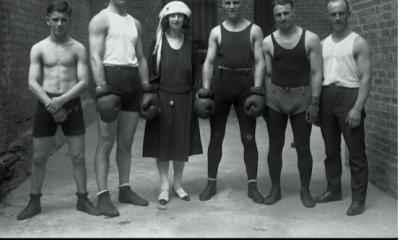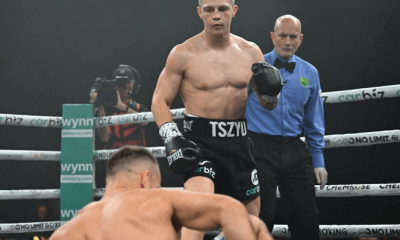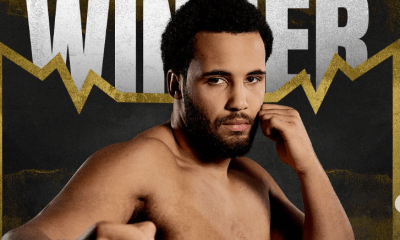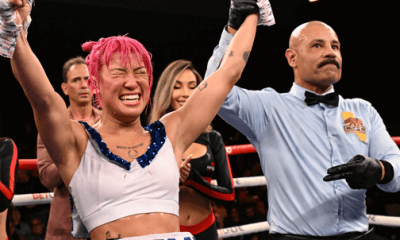Book Review
Literary Notes “Intimate Warfare” – The Gatti-Ward Trilogy
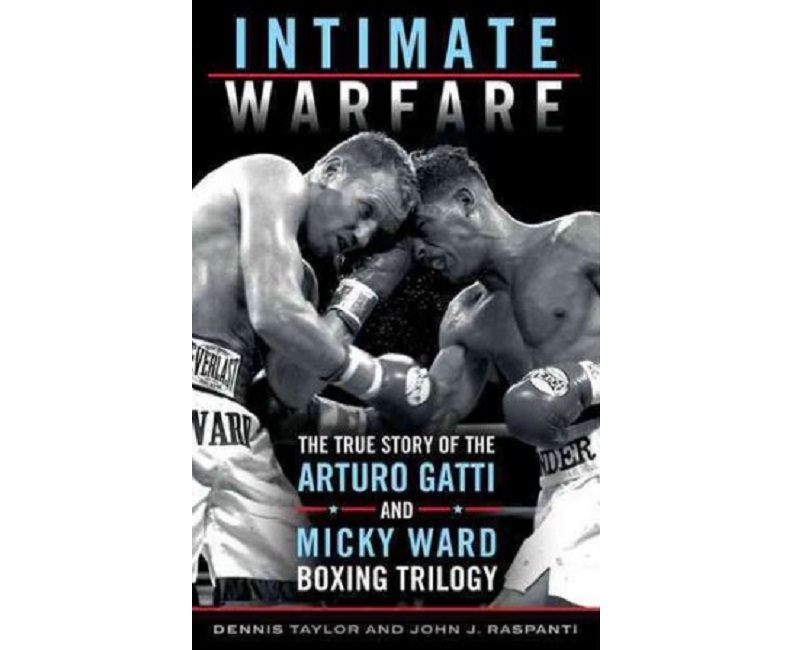
Intimate Warfare – One of the problems with boxing today is that too many of the fights that fans see are mismatches. The best fighters are often the most protected and reluctant to go in tough.
Arturo Gatti and Micky Ward never appeared on any pound-for-pound lists. Neither man was a great fighter in terms of the skills he possessed. All the heart in the world couldn’t make them competitive with elite boxers. But they were good action fighters who never shyed away from going in tough. They fought each other three times within the span of thirteen months. Each fight was scheduled for ten rounds. No alphabet-soup belts were at stake. Gatti-Ward II and III were very good fights. Gatti-Ward I was a great fight and the reason why boxing fans talk reverentially about the Gatti-Ward encounters to this day.
Intimate Warfare by Dennis Taylor and John Raspanti (Rowman & Littlefield) is the story of the Gatti-Ward trilogy.
Ward lived a relatively quiet life outside the ring and had a devoted fan base. Gatti burned the candle at both ends and had a cult following.
Gatti’s curriculum vitae included alcohol and drug abuse and numerous arrests for drunk driving. “I’ve known a number of fighters who could party really hard,” Jim Lampley observed. “Fighters who were pushing themselves to the limit in that regard the same way they would push themselves to the limit in the ring. And there was nobody like Arturo.”
Pat Lynch (Gatti’s manager) concurred, saying, “My wife and I would worry if the phone rang at three in the morning, hoping it was just him asking for a few dollars, hoping he wasn’t in trouble.”
But there was a sweet side to Arturo. In November 2002, I was in Atlantic City for the second Gatti-Ward fight. Paulie Malignaggi (who was relatively unknown at the time) was scheduled to fight Paul Delgado on the undercard. Arturo had just finished a sitdown in a conference room with a small group of media. Paulie had come in to listen and was standing off to the side.
“Arturo is my hero,” Paulie told me.
“Have you met him?”
“No.”
“C’mon. I’ll introduce you.”
Gatti had a fight coming up in two days. He was struggling to make weight, which can turn the nicest fighter in the world into an ogre. But he was warm and welcoming to Paulie and talked with him for several minutes.
“That made me feel good,” Paulie said afterward. “He treated me like I’m somebody.”
As for Gatti and Ward as fighters . . .
”Ward,” Taylor and Raspanti note, “was a reliable action fighter of limited ability, who could be counted on by one of the second-tier boxing networks to provide formidable competition for opponents perceived to have a brighter future.”
His will was the key to his marketabilty.
“Everybody’s heart is the same size,” Ward posited. “It’s your will to be able to go through pain and not give up [that counts]. You can’t train for it. Either you have it or you don’t. Either you’re born with it or you’re not.”
Meanwhile, Gatti fought in a manner that earned him the sobriquet of “The Human Highlight Reel.”
“Smash him with a right hand that splits an eyebrow, causing blood to pour down his face,’ Steve Springer of the Los Angeles Times wrote. “Crush him with a body shot that caves in a rib. Pound him until his legs become too shaky to support his body. Arturo Gatti will accept all that stoically. He always has, knowing it’s part of boxing, the cruel and often painful sport in which he makes a living. Just don’t ignore him, dismiss him, or show him a lack of respect. That, he can’t accept.”
When Arturo fought, Tim Starks noted, “You knew you were going to get a show. Every time.”
“You can’t give a fighter higher accolades than to say he always gave fans more than their money’s worth,” promoter Russell Peltz added.
Boxing is the ultimate one-on-one sport. Two evenly-matched fighters are necessary for a great fight. When Gatti and Ward met in the ring for the first time, they had sixteen losses between them. Gatti had two competitve advantages over his opponent. He was faster and 6-1/2 years younger. Given the fact that Ward was pushing 37, that was a significant age differential. But they were well-matched.
Their first encounter, contested at Mohegan Sun on May 18, 2002, was a brutal breathtaking drama.
“Two fighters on a collision course have total faith in their own abilities and their own will to win,” Taylor and Raspanti write. “Each believes he possesses a bottomless well of determination that, when it is needed, will be there and be enough when he needs it. Neither man believes he will lose the fight. Yet one of them will.”
Ward prevailed on a narrow 95-93, 94-93, 94-94 majority decision.
“I always wondered what it would be like to fight my twin,” Gatti said afterward. “Now I know.”
Fights II and III took place at Boardwalk Hall in Atlantic City. Each outing was an uphill climb for Ward, who lost unanimous decisions on November 23, 2002 (98-91, 98-91, 98-90) and June 7, 2003 (97-92, 96-93, 96-93).
Ward retired after Gatti-Ward III. Gatti fought on for another four years until other men’s fists inflicted damage and pain that was too much for even him to bear.
Intimate Warfare consists of alternating chapters on Gatti and Ward until they meet in the ring and their lives are joined. Like its subjects, the book is a solid workmanlike effort. It summarizes what’s already known about both men but doesn’t break new ground. The best re-telling of Arturo Gatti vs. Micky Ward remains watching a video of their first fight.
The last chapter of Intimate Warfare is devoted to Gatti’s untimely death in Brazil seven years ago. Depending on which version of events one believes, either he committed suicide by hanging himself from a staircase after a night of hard drinking and quarreling with his wife, or was murdered by his wife with the assistance of one or more accomplices. Initially, Arturo’s wife – a former exotic dancer named Amanda Rodrigues – was arrested and charged with murder. Three weeks later, the charges were dismissed.
Most of Arturo’s friends and business associates (including Micky Ward) think he was murdered. They believe that he loved life and his two children too much to commit suicide. I agree with them. For those reasons and one more.
On the day it was announced that Arturo had died, I thought back to a Boxing Writers Association of America dinner that I attended at a hotel in midtown Manhattan. If memory serves me correctly, it was in 2003, when Arturo and Micky were co-honored for having participated in the 2002 “Fight of the Year.”
I’m not positive of the date, but I remember one moment from the dinner very clearly. Midway through the awards presentations, I left my seat to go to the men’s room. When I got there, an intimidating young man was blocking the entrance.
“You can’t go in there,” he said.
“Why can’t I go in there?”
“It’s in use. You’ll have to go to another floor.”
“What do you mean, it’s in use? There are a dozen urinals and toilets in there.”
At which point, Arturo staggered out of the men’s room, dead drunk, accompanied by a woman who looked very much like a dancer at a not-very-exclusive adult club.
“Blow job,” Arturo announced when he saw me.
And he pointed to his fly. Which was still unzipped.
In that condition, Arturo couldn’t have walked a straight line, let alone figured out the mechanics of detaching his wife’s purse strap, hooking it over a bannister railing, and hanging himself.
But let’s end on a more ennobling note.
“Ward and Gatti,” Taylor and Raspanti write, “will be remembered as mortal men who, mostly through courage and sheer will, accomplished things before our very eyes that should not have been humanly possible. They pushed themselves beyond those physical limits that the rest of us have come to accept, past the fatigue, the agony, the fear, the nagging desire to give up, rest, and save at least part of themselves for another day. And they did it three times.”
They were sportsmen of the highest order, who fought within the rules and treated each other with respect before, during, and after their bloody trilogy.
Thomas Hauser can be reached by email at thauser@rcn.com. His most recent book – A Hard World: An Inside Look at Another Year in Boxing – was published recently by the University of Arkansas Press. In 2004, the Boxing Writers Association of America honored Hauser with the Nat Fleischer Award for career excellence in boxing journalism.
Intimate Warfare / Check out more boxing news on video at The Boxing Channel.
-

 Featured Articles4 weeks ago
Featured Articles4 weeks agoThe Hauser Report: Zayas-Garcia, Pacquiao, Usyk, and the NYSAC
-

 Featured Articles3 weeks ago
Featured Articles3 weeks agoOscar Duarte and Regis Prograis Prevail on an Action-Packed Fight Card in Chicago
-

 Featured Articles2 weeks ago
Featured Articles2 weeks agoThe Hauser Report: Cinematic and Literary Notes
-

 Book Review2 weeks ago
Book Review2 weeks agoMark Kriegel’s New Book About Mike Tyson is a Must-Read
-

 Featured Articles4 weeks ago
Featured Articles4 weeks agoRemembering Dwight Muhammad Qawi (1953-2025) and his Triumphant Return to Prison
-
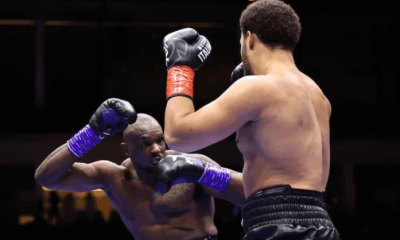
 Featured Articles7 days ago
Featured Articles7 days agoMoses Itauma Continues his Rapid Rise; Steamrolls Dillian Whyte in Riyadh
-
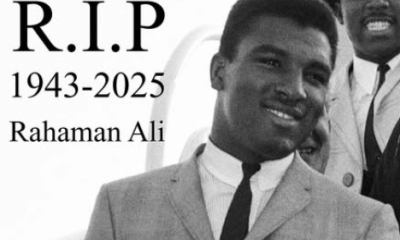
 Featured Articles3 weeks ago
Featured Articles3 weeks agoRahaman Ali (1943-2025)
-

 Featured Articles3 weeks ago
Featured Articles3 weeks agoTop Rank Boxing is in Limbo, but that Hasn’t Benched Robert Garcia’s Up-and-Comers




